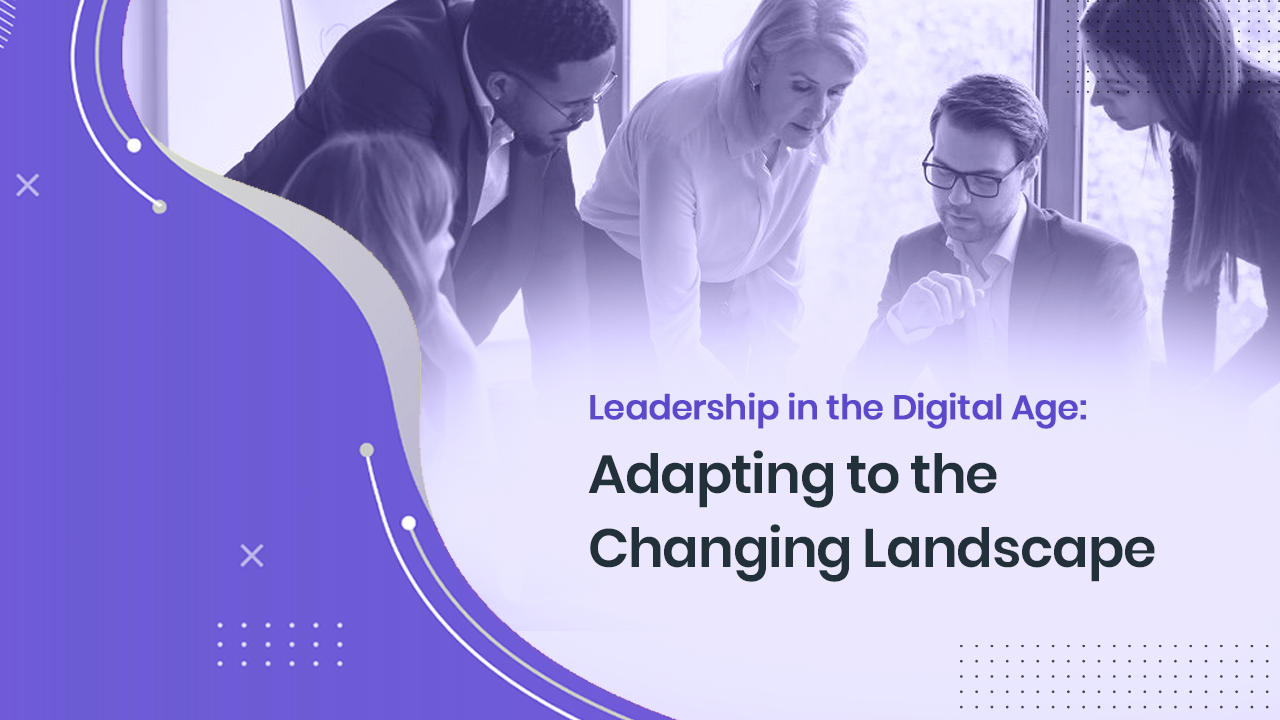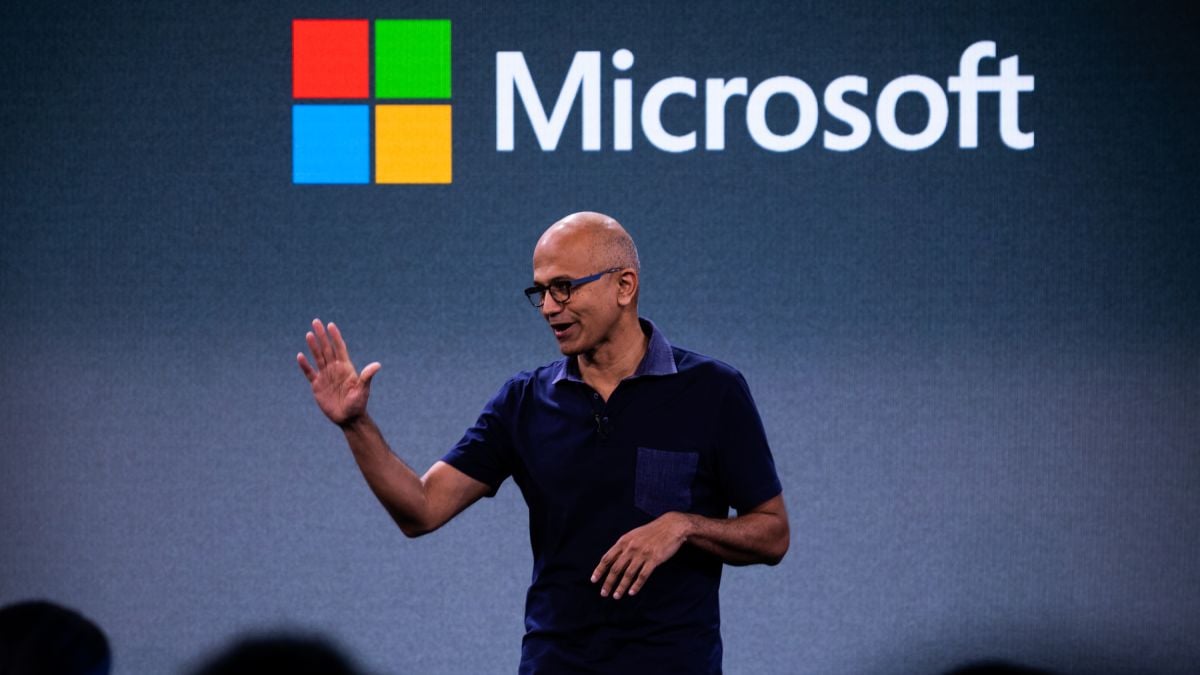In today’s digital age, leadership is undergoing a seismic shift. Digital leaders must possess adaptability, technological fluency, vision, and collaborative skills to navigate the evolving landscape effectively. This exploration delves into the changing face of leadership, the key traits of digital leaders, the challenges they encounter, and strategies for effective digital leadership.
Table of Contents
The Changing Landscape of Leadership
Leadership has undergone significant transformations over time, closely tied to the prevailing economic and technological eras. From the age of agriculture to the age of industry and now into the digital age, leadership styles, and practices have adapted to suit the needs and challenges of each epoch.
In ancient times, leadership revolved around agricultural societies. These societies operated at a slow pace, often organized in hierarchical structures with limited mobility. The leadership of this period was centered on local, agricultural endeavors and communal management.
The Industrial Age brought about a major shift in leadership. Hierarchical, bureaucratic management structures emerged, prioritizing internal efficiency and control. Decision-making was concentrated at the top, and organizations followed strict rules and regulations.

Even as societies transitioned into the Industrial Age, remnants of older practices persisted. These remnants are evident in early industrial-era designs, like the inclusion of horses in early automobile models, highlighting the tendency for prior thinking to linger beyond its relevance.
Industrial-era management was characterized by a top-down hierarchy of authority. It relied on rules and bureaucracy to maintain control and focused on achieving internal efficiency. Motivation was typically driven by rewards and punishments, representing the management paradigm of the industrial era.
The shift to the digital age began with advancements in technology that made information more valuable than physical resources. This transition was not solely driven by technology but also required a corresponding evolution in leadership and management practices.
In the digital age, leadership takes on a radically different form. Traditional hierarchical structures are replaced by horizontal networks of self-organizing teams. The primary focus shifts from internal processes to delivering value to customers and adapting rapidly to changes in the external environment.
Digital-age leadership requires a transformation in mindset. It entails shifting from an inward-looking focus on efficiency and control to an outward-facing approach centered on providing value to customers. Collaboration, inspiration, and engagement become essential tools for harnessing the full potential of individuals and teams in this new leadership paradigm.
Characteristics of Effective Digital Leaders
Effective digital leadership requires a multifaceted mindset and approach. Digital leaders must embody a unique mindset and approach that enable them to navigate the complexities of the digital age. Let’s delve into the key characteristics that define effective digital transformation and leadership.
Adaptability and Agility
At the forefront of effective digital leadership is the capacity for adaptability and agility. In the digital age, change is constant, and organizations must not only embrace it but harness it for growth. Digital leaders possess the unique ability to not just accept change but also view it as an opportunity for innovation and improvement.
They are quick to assess new information, evolving market dynamics, and emerging trends, allowing them to make informed decisions about leadership and digital transformation promptly.

More than that, their agile approach ensures that their organizations remain relevant and responsive in an ever-shifting landscape. Furthermore, they instill a culture of adaptability within their teams, fostering a collective openness to change and innovation. This leadership and digital transformation culture of adaptability empowers employees at all levels to proactively contribute to the organization’s agility, creating a dynamic and forward-thinking workplace.
Technological Literacy
In the digital age, technological literacy is no longer a mere asset but an essential trait of leadership and digital transformation. Effective digital leaders go beyond basic tech proficiency; they immerse themselves in technology trends and innovations.
They understand that technology is not just a support function but a driving force behind leadership and digital transformation. These leaders continually educate themselves about the latest advancements and their implications for their industry.

Their profound technological acumen empowers them to make informed decisions about technology investments, partnerships, and strategies. They recognize that technology is not just a tool but a pivotal enabler of innovation and efficiency. By fostering a culture of technological curiosity within their organizations, they encourage employees to explore and experiment with digital tools and solutions, unlocking new possibilities for growth and competitiveness.
Vision and Strategic Thinking
Visionary thinking is a hallmark of effective digital leaders. They possess a compelling and forward-thinking vision for the future of their organizations. This leadership and digital transformation vision extends beyond immediate goals and financial targets; it encompasses a broader perspective of where the industry and technology are headed.

These leaders anticipate digital trends and disruptions, comprehending the potential of emerging technologies. Their strategic decisions are guided by this visionary approach, positioning their organizations for sustained success. They are unafraid to challenge established norms and embrace new paradigms, recognizing that the digital age demands a departure from traditional management styles.
This visionary digital transformation leadership not only provides a clear direction but also inspires employees, instilling a sense of purpose and excitement about the organization’s journey into the digital future.
Collaboration and Communication Skills
Effective digital leaders recognize the paramount importance of collaboration and communication skills. They understand that in today’s interconnected world, success is achieved through the collective efforts of diverse teams. These leaders foster a leadership and digital transformation environment where collaboration is not only encouraged but celebrated. They promote cross-functional teamwork, valuing diverse perspectives and fostering innovation.

Moreover, their communication skills are exceptional, extending beyond the transmission of information to inspiring and motivating their teams. They comprehend the power of emotional engagement and its role in driving innovation and excellence within their organizations.
By replacing rigid top-down hierarchies with networks of competence, they enable quicker decision-making and adaptability throughout the organization, creating a more agile and dynamic workplace. Their emphasis on open and transparent communication ensures that all employees, regardless of their role, feel heard and valued, contributing to a culture of trust and shared purpose.
Challenges Faced by Leaders in Digital Transformation
Competencies for Digital Leadership
Navigating the leadership and digital transformation landscape presents leaders with multifaceted challenges that require a unique blend of technical, managerial, and ethical competencies. In the ever-evolving realm of technology, leaders must not only stay informed about emerging trends and innovations but also possess the technical expertise to comprehend their implications fully. This involves a continuous commitment to learning and adaptation, as what is cutting-edge today may become obsolete tomorrow. The challenge of leadership and digital transformation lies in maintaining a dynamic skill set and ensuring that organizations remain at the forefront of technological advancements.
Staying Ahead of Emerging Technologies
The digital age doesn’t solely revolve around technical prowess; it also demands a profound understanding of managerial strategies. Leaders must develop comprehensive leadership and digital transformation strategies that effectively leverage these innovations to drive organizational success. This entails aligning technology initiatives with business objectives, fostering a culture of innovation, and ensuring efficient implementation. Striking this balance between technological possibilities and organizational needs is a formidable challenge that requires strategic vision and effective leadership.
Balancing Innovation and Ethics
In the digital age, leaders face the ethical dilemma of balancing technological advances with ethical responsibility. The extensive collection and use of data raise critical concerns about privacy and security. Leaders must navigate the intricate terrain of data privacy regulations and cybersecurity threats while harnessing data for business insights. They need to develop and enforce ethical data practices that prioritize the protection of sensitive information while also ensuring transparency and compliance. The potential impact of cyberattacks on organizations is a looming threat, underscoring the importance of ethical considerations in leadership and digital transformation.
Overcoming Resistance to Change
One of the foremost challenges of leading in the digital age is overcoming resistance to change within organizations. As technology rapidly evolves and becomes increasingly integrated into business processes, leaders often encounter pushback from employees who are comfortable with existing systems and practices. Resistance can stem from fear of the unknown, concerns about job security, or simply a reluctance to adapt to new ways of working.
Effective leaders must employ leadership and digital transformation strategies that include clear communication, training, and a compelling vision for the benefits of digital transformation. They need to create a leadership and digital transformation culture that embraces change as an opportunity for growth rather than a disruption, fostering a mindset of continuous learning and adaptation.
Navigating Uncertainty and Risk
Navigating uncertainty and risk is a fundamental challenge in the digital age, where the business landscape is characterized by rapid technological advancements and market dynamics. Leaders must make critical decisions in the face of evolving and often unpredictable conditions. The Leadership and Digital Transformation realm introduces new risks, such as cyber threats and data breaches, that can have far-reaching consequences.
Effective leaders must be adept at risk assessment and mitigation, proactively identifying potential threats and devising strategies to address them. They also need to strike a balance between innovation and risk management, recognizing that taking calculated risks is often essential for staying competitive and driving growth.
Addressing Skills Gaps and Upskilling Employees
The digital age demands a workforce with a diverse skill set, including proficiency in technology, data analysis, and digital communication. However, many organizations face challenges in addressing skills gaps among their employees. Leaders must identify these gaps and implement comprehensive upskilling programs to ensure that their teams are equipped to navigate the digital landscape effectively. This involves assessing the current skill levels, providing training opportunities, and fostering a culture of continuous learning.
Moreover, leaders should actively promote diversity and inclusion to harness a wide range of perspectives and talents, further enhancing their organizations’ ability to thrive in the digital age.
Balancing Short-term Results with Long-term Strategy
Balancing short-term results with long-term strategy is a perennial challenge for leaders in the digital age. The pressure to deliver immediate outcomes often competes with the need to invest in long-term digital transformation initiatives. Leaders must strike a delicate equilibrium between meeting short-term financial targets and laying the groundwork for sustained success in a digital future. This requires strategic planning that incorporates both immediate priorities and longer-term vision.
Leaders must communicate the importance of this balance to stakeholders and advocate for the patience and commitment necessary for digital transformation to yield its full benefits. It involves aligning short-term actions with a broader strategic roadmap that anticipates the evolving digital landscape and positions the organization for enduring competitiveness.
Strategies for Effective Leadership in Digital Transformation
Creating a Culture of Innovation and Adaptability
One potent strategy for effective leadership in digital transformation is the cultivation of a culture that embraces innovation and adaptability. Recognizing that resistance to change can hinder progress, leaders must actively foster an environment where innovation is not only encouraged but ingrained in the organizational DNA. This entails promoting a mindset that views change as an opportunity for growth rather than a disruption to the status quo.
Leaders should champion initiatives that empower employees to experiment with new technologies and processes, encouraging them to explore creative solutions to challenges.
Furthermore, transparent communication about the benefits of digital transformation and a shared vision for the future can inspire employees to embrace change with enthusiasm. By demonstrating the value of innovation and adaptability through tangible outcomes and success stories, leaders can effectively lead their organizations past the hurdle of resistance to change, setting the stage for successful digital transformation.

Lastly, leaders can further foster a culture of innovation and adaptability by ensuring that the organization has the essential resources, support, and training needed for success in the digital age. This involves investing in technology infrastructure, tools, and systems that facilitate innovation and streamline digital processes.
Leaders should allocate budgets and allocate resources strategically to support digital initiatives and experimentation. Equally important is providing ongoing training and development opportunities to equip employees with the skills required to navigate the digital landscape effectively. By offering continuous learning and skill-building programs, leaders empower their teams to stay up-to-date with emerging technologies and adapt to evolving digital challenges.
Additionally, leaders should actively engage with and listen to their employees, encouraging their input and ideas for innovation. This collaborative approach ensures that the entire organization is collectively working towards a culture of innovation and adaptability, maximizing the chances of successful digital transformation.
Leading by Example: Embracing Technology and Continuous Learning
Addressing the challenge of navigating uncertainty and risk in the digital age necessitates leaders setting an example by embracing technology and fostering a culture of continuous learning within their organizations. Leaders should lead by demonstrating a willingness to take calculated risks and, crucially, learn from any resulting failures. This sends a powerful message to their teams that risk-taking is not only acceptable but also an essential component of innovation and growth.

By actively engaging with emerging technologies and staying informed about digital trends, leaders not only enhance their own digital literacy but also inspire their employees to do the same. They should encourage experimentation and provide a safe environment where employees can test new ideas and solutions, even if they result in setbacks.
This approach not only promotes a culture of learning but also equips the organization to navigate uncertainty with resilience and adaptability. Leaders who lead by example in embracing technology and embracing the lessons of failure create a more agile and risk-tolerant organization, better prepared to thrive in the digital age.
Empowering and Involving Employees in the Transformation Journey
To effectively address the challenge of addressing skills gaps and upskilling employees in the digital age, leaders should focus on empowering and actively involving their workforce in the transformation journey. Recognizing that the digital landscape demands a diverse skill set, leaders should engage employees in identifying skill gaps and co-creating solutions to bridge them. This participatory approach not only empowers employees but also leverages their unique perspectives and insights.

Leaders should champion upskilling initiatives, and provide access to relevant training programs, resources, and mentorship opportunities. By involving employees in shaping their own learning paths, leaders can tailor upskilling efforts to individual needs, fostering a culture of continuous learning. Moreover, leaders should celebrate and recognize employees’ achievements and contributions to the organization’s digital transformation.
By actively involving employees in the transformation journey, leaders not only address skills gaps but also foster a sense of ownership and commitment to the organization’s digital evolution. This approach not only enhances employees’ digital proficiency but also positions the organization for success in the ever-changing digital landscape.
Measuring Success and Adapting Strategies
Measuring the success of digital transformation initiatives is crucial for effective leadership in the digital age. Leaders should establish clear and relevant key performance indicators (KPIs) that align with their digital transformation objectives. These KPIs should encompass various aspects, such as increased operational efficiency, enhanced customer experiences, and improved employee productivity.
By defining and regularly tracking these KPIs, leaders can objectively assess the progress of digital initiatives, identify areas for improvement, and make data-driven decisions. Additionally, sharing these KPIs with the organization fosters transparency and accountability, aligning the entire workforce with the goals of digital transformation.

Digital transformation leaders also need to implement continuous feedback loops and agile adjustment strategies to stay on course and adapt to evolving conditions. These feedback mechanisms involve gathering insights from employees, customers, and stakeholders on the effectiveness of digital initiatives.
Leaders should actively seek input and listen to feedback, creating a culture of open communication. This feedback informs agile adjustments to strategies, allowing leaders to pivot quickly when necessary and seize emerging opportunities.
Agile adjustments may involve reallocating resources, revising project timelines, or refining digital solutions based on real-time feedback. Embracing flexibility and responsiveness is essential for leaders in the digital age, ensuring that their organizations remain agile and resilient amid constant change.
Case Studies: Exemplary Digital Leadership
Walmart: Doug McMillon’s Pioneering eCommerce Strategy
Doug McMillon stands as an exemplar of digital leadership, reshaping Walmart’s retail landscape through strategic investments in eCommerce and omnichannel retail. Under his stewardship, Walmart has undergone a remarkable transformation in response to the digital age. Recognizing the growing significance of eCommerce in the retail industry, McMillon has spearheaded Walmart’s substantial investments in this domain.
The acquisition of online marketplace Jet.com in 2016 marked a pivotal moment in the company’s digital journey, expanding Walmart’s online presence and infusing it with eCommerce expertise. This commitment has allowed Walmart to compete effectively in the digital retail space.

Furthermore, McMillon’s leadership has prioritized the integration of Walmart’s physical stores with its digital operations, creating a seamless omnichannel shopping experience. Initiatives such as in-store pickup, curbside delivery, and same-day options bridge the gap between physical and digital realms, catering to diverse customer preferences and staying ahead in a rapidly evolving retail landscape.
Beyond digital innovation, McMillon’s commitment to sustainability and social responsibility positions Walmart as a responsible corporate leader in the digital age. His vision extends to a regenerative company, aiming to achieve zero emissions and zero waste by 2040. McMillon’s strategic investments, omnichannel focus, and sustainability efforts showcase his effective digital leadership in navigating the challenges and opportunities of the modern retail landscape.
Amazon: Jeff Bezos’ Customer-centric Approach
Jeff Bezos, the founder and former CEO of Amazon, is celebrated for his exemplary digital leadership marked by an unwavering commitment to a customer-centric approach. Under Bezos’ visionary guidance, Amazon underwent a remarkable evolution, transcending its origins as an online bookstore to become one of the world’s foremost eCommerce and technology giants.
At the heart of Bezos’ leadership philosophy was an unyielding obsession with customer satisfaction. He instilled a culture of customer obsession within Amazon, emphasizing the paramount importance of understanding and fulfilling customer needs, often at the expense of conventional norms. This unwavering focus on the customer became a foundational pillar of Amazon’s success, fostering customer loyalty and propelling the company to unparalleled market dominance.

Furthermore, Bezos championed a long-term vision that prioritized sustained growth and innovation over short-term gains. Amazon’s willingness to invest in forward-looking initiatives, such as Amazon Web Services (cloud computing) and Amazon Prime Video (digital entertainment), exemplified this commitment to long-term thinking.
Bezos fostered a data-driven decision-making culture within Amazon, where choices were underpinned by rigorous data analysis. This analytical approach empowered the company to make informed decisions and continually optimize its operations.
Additionally, Bezos encouraged innovation and risk-taking, empowering employees to explore new ideas and experiments. Amazon’s groundbreaking products like the Kindle e-reader and Amazon Echo bear testament to this culture of innovation.
Microsoft: Satya Nadella’s Transformational Leadership
Satya Nadella, CEO of Microsoft, stands as an exemplary model of transformational leadership in the digital age, steering the technology behemoth toward renewed success and relevance. Taking the helm in 2014, Nadella orchestrated a profound shift in Microsoft’s identity and business strategy, ushering it into the cloud-first, mobile-first era. His leadership embodies several key tenets:
Under Nadella’s stewardship, Microsoft executed a strategic pivot towards cloud computing, adopting a Cloud-first approach. This shift propelled Microsoft Azure, the company’s cloud platform, into rapid growth and established Microsoft as a formidable force in the cloud services arena. By embracing this transformation, Microsoft retained its competitiveness and resonance in an ever-evolving technological landscape.

Moreover, Nadella championed an ethos of openness and collaboration, breaking down conventional organizational silos. He promoted cross-functional teamwork and cooperation, nurturing a culture that celebrated innovation and partnership. This cultural shift allowed Microsoft to adapt nimbly to evolving market dynamics and customer expectations.
Additionally, Nadella prioritized inclusive leadership, advocating for diversity and inclusion within Microsoft’s ranks. He recognized the imperative of diverse perspectives and backgrounds in driving innovation and empathizing with a global customer base. This commitment not only fostered a more inclusive workplace but also enriched Microsoft’s product development and market appeal.
Conclusion
Digital leadership is pivotal in the modern era. It requires flexibility, technology savvy, foresight, and collaboration. Challenges like technology adoption and ethical considerations must be addressed. Yet, through fostering innovation, leading by example, and empowering employees, visionary leaders can steer organizations to success. In this dynamic digital realm, leadership is the catalyst for progress and adaptation.
If you’d love to receive more insightful updates from us, please consider subscribing to our newsletter right below.











